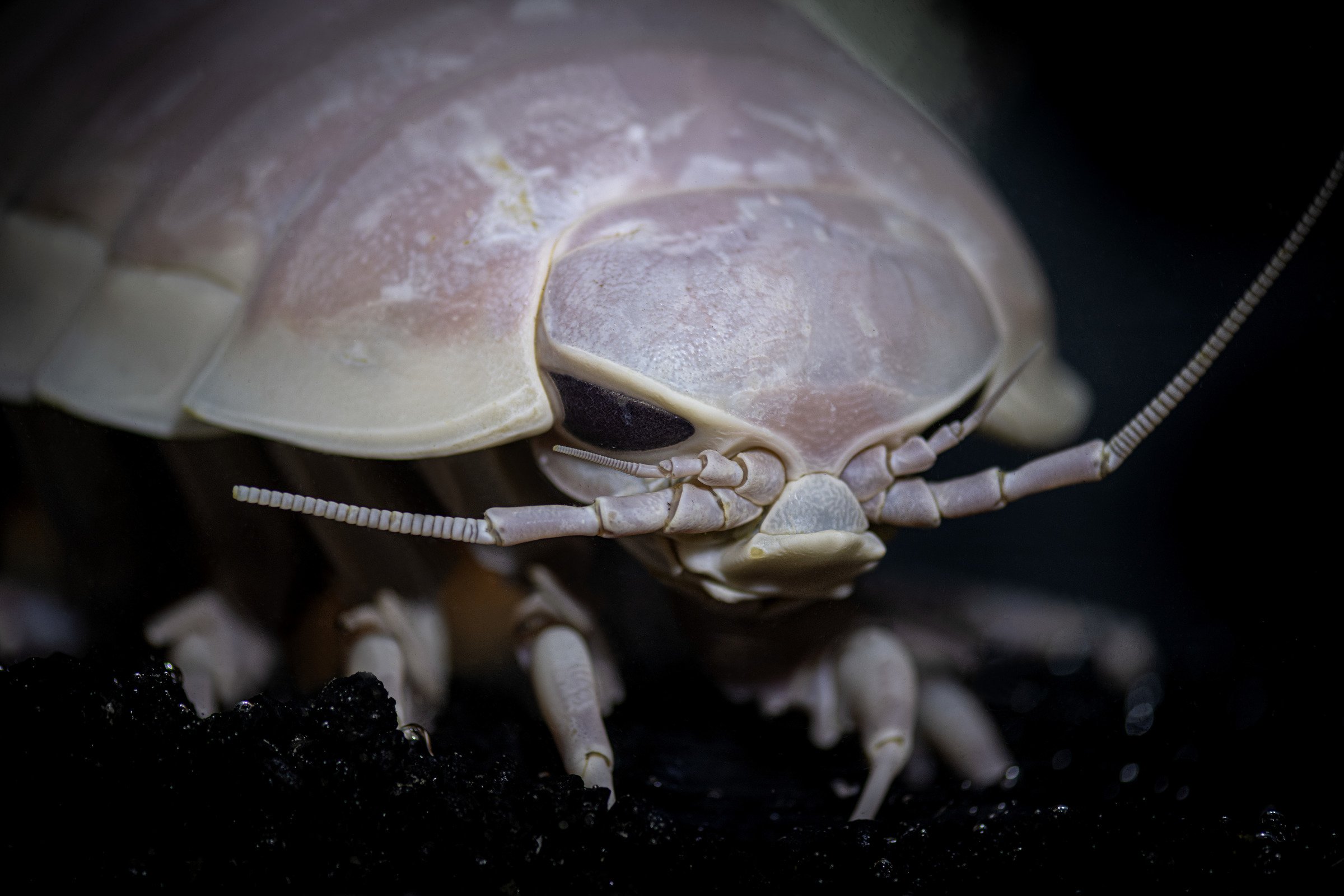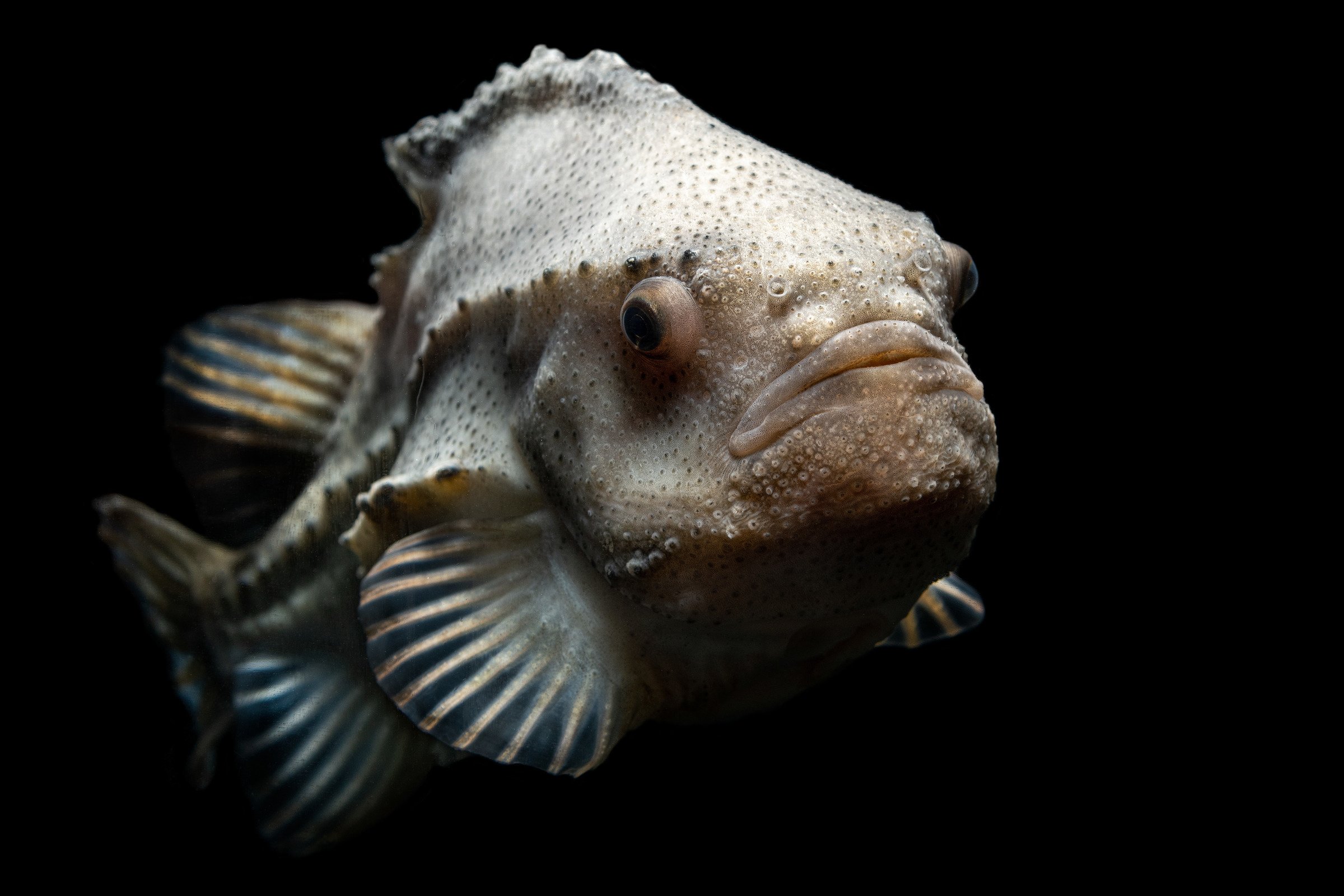Mysterious species wreak havoc on Monterey Bay fisheries and coastal communities
Giant Isopod, © Monterey Bay Aquarium
Exclusive April 1 special report
Two mysterious species of marine organisms, cinematic in their spookiness, have started showing up at the surface of Monterey Bay—in the thousands. And one of the two species is being aggressive, attacking beachgoers and local fishing boats alike.
That is panicking many.
The giant isopod is abundant in the frigid depths of the Atlantic, Pacific, and Indian oceans. Now that it’s taking to new frontiers, the most intense development—and hardest to explain—is that the largest isopod in the ocean seems to be surviving for up to 20 minutes on land. Some have been reported biting curious children, and one allegedly chewed off a miniature Pomeranian’s paw.
Those updates arrive per social media reports, which are exploding despite the unwieldy hashtag #montereybaydeepseacreaturezombiecrisismadness2022hellscape.
But maybe that behavior shouldn’t be so stunning. Giant isopods are notorious among fishermen for attacking fish as they’re being pulled in from depth.
They also have proven hard to abate, as they tuck their overlapping segments of calcareous exoskeleton into a tough ball. That was the case when local snorkeler, surfer, stand-up paddler, and travel author Stuart Thornton took to smacking them with his SUP paddle.
“Those sea armadillos don’t kill easy,” he says. “But neither does Stuart Thornton.”
While marine experts are baffled at the development, Monterey Bay fishermen are fighting back.
“When a deep-water creature wants to take my bait from the line or steal my catch from the net, all’s fair among predators,” says local fisherman, Giovanni Pennisi, “but start climbing the sides of my vessel, and it’s on.”
Lumpfish © Monterey Bay Aquarium
Another species showing up in alarming numbers is the lumpfish, which can live at depths of more than a mile below the surface, and look like pimply gray zombies with fins and gills. But so far they have shown no interest in consuming human flesh in the water, or on shore.
As they slosh onto the sand, they roll around and then quickly expire. That’s happening as researchers hustle to slip some into pressurized saltwater tanks before they die, hoping to study why they might be making a massive group cameo so far from their typical habitat.
Carmel-based sommelier-gourmand Toby Rowland-Jones—a devout lover of local seafood and the fishermen who reel it in—has been spotted collecting lumpfish in hopes of extracting their eggs, even though lumpfish caviar goes for a lot less ($1/ounce) than higher-end roe (up to $300/ounce).
“Hey man,” Rowland-Jones says. “It’s still caviar.”
While chaos continues in the intertidal area, one marine pro has a theory on why they’re showing up now, April 1, 2022, about a week before Into the Deep: Exploring Our Undiscovered Ocean makes its debut at Monterey Bay Aquarium.
“Both species are featured in the exhibit, so maybe they’re staging a Saving Dory sort of rescue,” says MBA head dive programs director George Z. Peterson. “Besides, the last few years have been hard on a lot of creatures, so maybe they’re just trying to get out of the house.”



